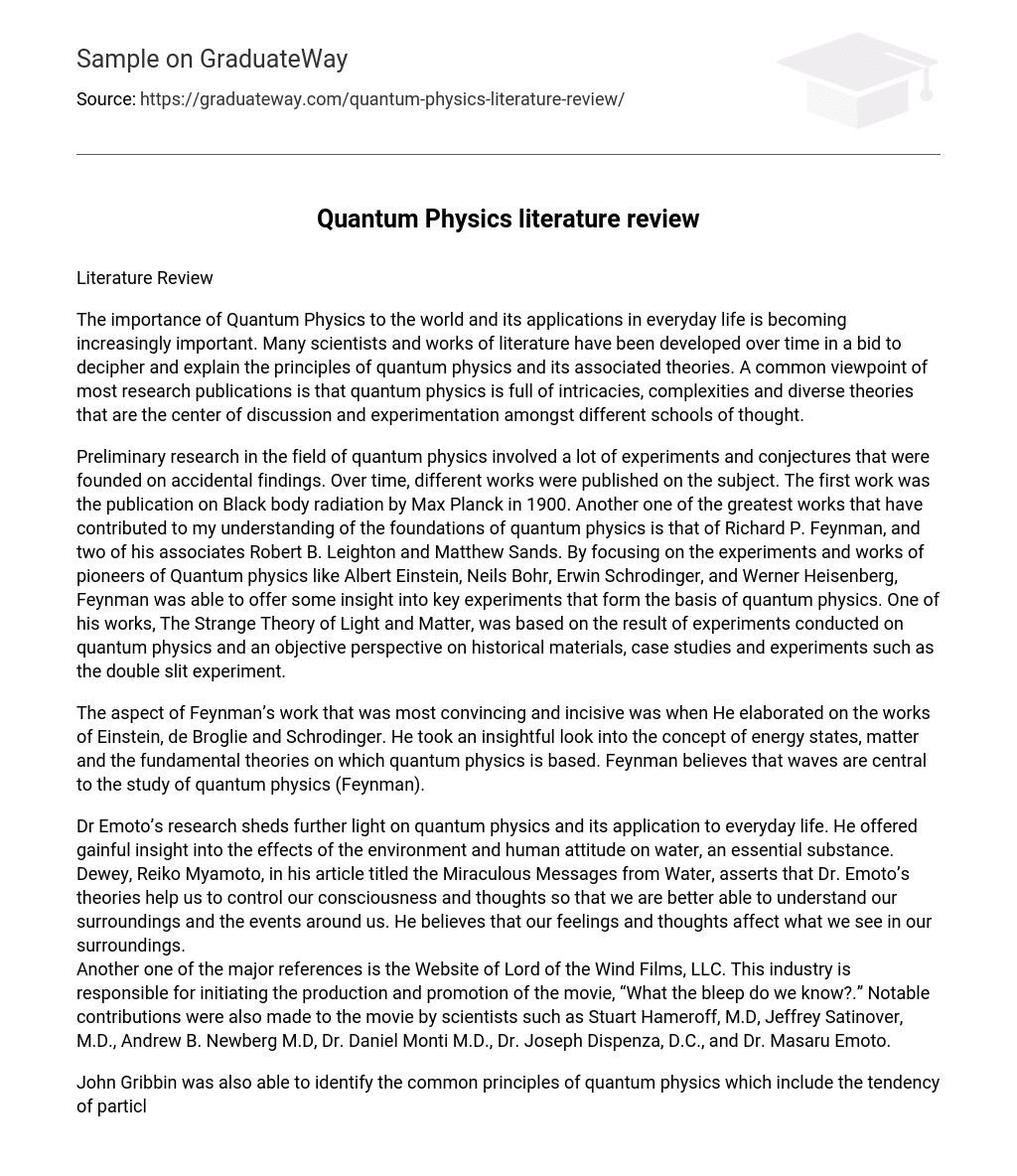Literature Review
The importance of Quantum Physics to the world and its applications in everyday life is becoming increasingly important. Many scientists and works of literature have been developed over time in a bid to decipher and explain the principles of quantum physics and its associated theories. A common viewpoint of most research publications is that quantum physics is full of intricacies, complexities and diverse theories that are the center of discussion and experimentation amongst different schools of thought.
Preliminary research in the field of quantum physics involved a lot of experiments and conjectures that were founded on accidental findings. Over time, different works were published on the subject. The first work was the publication on Black body radiation by Max Planck in 1900. Another one of the greatest works that have contributed to my understanding of the foundations of quantum physics is that of Richard P. Feynman, and two of his associates Robert B. Leighton and Matthew Sands. By focusing on the experiments and works of pioneers of Quantum physics like Albert Einstein, Neils Bohr, Erwin Schrodinger, and Werner Heisenberg, Feynman was able to offer some insight into key experiments that form the basis of quantum physics. One of his works, The Strange Theory of Light and Matter, was based on the result of experiments conducted on quantum physics and an objective perspective on historical materials, case studies and experiments such as the double slit experiment.
The aspect of Feynman’s work that was most convincing and incisive was when He elaborated on the works of Einstein, de Broglie and Schrodinger. He took an insightful look into the concept of energy states, matter and the fundamental theories on which quantum physics is based. Feynman believes that waves are central to the study of quantum physics (Feynman).
Dr Emoto’s research sheds further light on quantum physics and its application to everyday life. He offered gainful insight into the effects of the environment and human attitude on water, an essential substance. Dewey, Reiko Myamoto, in his article titled the Miraculous Messages from Water, asserts that Dr. Emoto’s theories help us to control our consciousness and thoughts so that we are better able to understand our surroundings and the events around us. He believes that our feelings and thoughts affect what we see in our surroundings.
Another one of the major references is the Website of Lord of the Wind Films, LLC. This industry is responsible for initiating the production and promotion of the movie, “What the bleep do we know?.” Notable contributions were also made to the movie by scientists such as Stuart Hameroff, M.D, Jeffrey Satinover, M.D., Andrew B. Newberg M.D, Dr. Daniel Monti M.D., Dr. Joseph Dispenza, D.C., and Dr. Masaru Emoto.
John Gribbin was also able to identify the common principles of quantum physics which include the tendency of particles to behave like waves, the constant movement of particles in a random fashion, the impossibility of identifying the speed and location of a particle at a particular time and the division of the physical world into multiple realms.
David Pratt in his paper “Consciousness, Causality, and Quantum Physics.” asserts that the world is filled with ambiguity, randomness and absolute indeterminism. He also illustrated many relevant experiments such as Schrodinger’s cat experiment
Further research in quantum physics should focus on expanding the general sphere of knowledge and its effects on human consciousness and thought processes. Apart from Emoto’s water experiment, not much has been achieved in this area. It will be exciting to see what new developments will come up in the near future.





